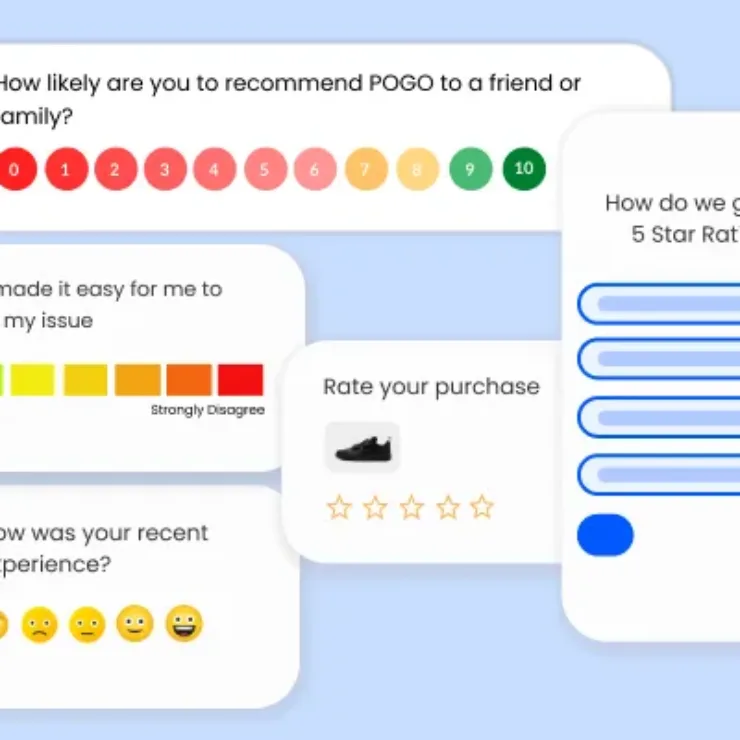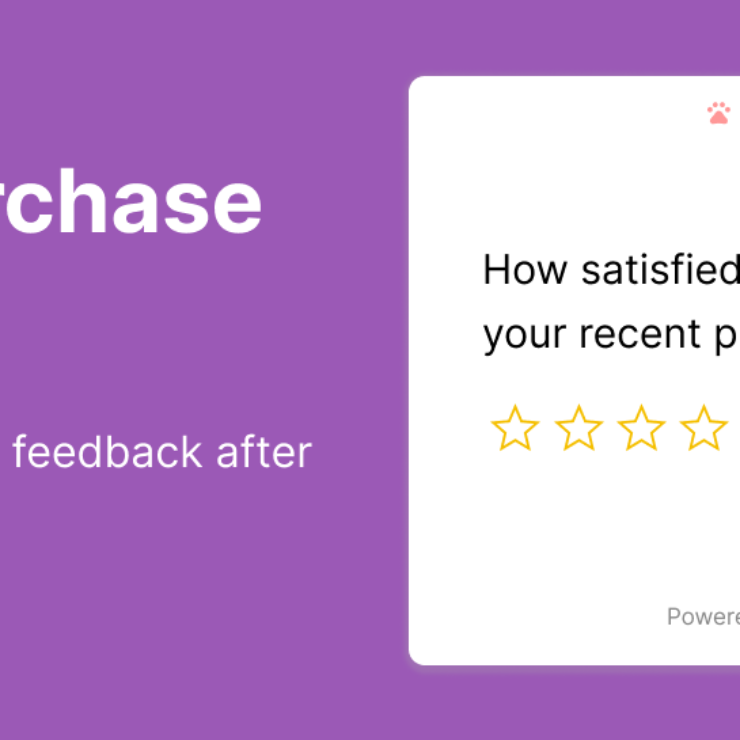Last updated on:
“A recent survey found out that…” This is the statement we look for when we want to find credibility or the foundation behind an answer. So, there’s not a shadow of doubt regarding the significance of surveys. Different types of survey methods let you analyze different issues at hand with the help of insightful data, find the solutions, and make the right decisions.
Well, that’s all fine. But how do you select the right type of survey? There are quite a few, and knowing what kind of survey to choose is imperative for its success. No worries. We got you.
In this article, we discuss the different types of survey methods, their purpose, pros, and cons. So, let’s dive in.
11 Different Types of Survey Methods
Choosing your survey type boils down to one thing and that is the purpose. As mentioned earlier, there are various types of surveys and we will be exploring the 11 main survey methods.
1. Focus Groups
A Focus group is definitely one of the most popular types of survey. But what are the focus groups exactly? And how is the survey conducted? Let’s find out.
Focus groups, as the name, suggests involve a group of people and are mostly conducted in person. This group may not contain a lot of participants but all of them will be demographically unique. Led by a moderator, the focus group can be asked their opinion or to discuss a certain topic or even sample new products.

Types of Survey – Focus Group
Now, coming to the purpose, the focus group survey aims to understand and analyze people’s reactions to sampling a product, or discussing a hot topic.
‘Are they getting emotional when they discuss?’ ‘What is their immediate reaction after sampling a product?’
The group represents diverse populations and so, the organizers and the moderator gets an idea as to how the public, in general, will respond to these topics/products. As the survey proceeds the moderator will be scrutinizing and analyzing every participant.
The Drawbacks On the downside, this type of survey is quite expensive. Firstly, you need a trained moderator and they need to be paid. Secondly, you need to incentivize the program heavily to lure in more participants. Finally, you need to choose the right location and that incurs charges too.
2. Interviews
Often called in-person surveys, interviews are yet another type of survey that is hugely popular. Since it is a face-to-face survey, interviewers get a chance to understand a lot from their reactions. Many call it outdated, and it is true to an extent, especially at a time when we have various types of online surveys, which include video surveys as well.
Yet, it does have value because it is conducted in person and you can analyze the reactions of interviewees up close. This will be useful when the survey demands extensive probing to know the exact answer. They can then closely analyze the respondent’s changes in attitude, expressions, tone, and body movements. All these will decide the outcome of the survey.
Also, sometimes these interviews are recorded for future use.
The Drawbacks
- The process can be long and time-consuming.
- Interviews are an expensive option. You will have to find a location, an interviewer, and incentivize the experience.
- Since it is a face-to-face survey method, there is no anonymity. Respondents may not be comfortable answering questions of a sensitive nature.
- Higher chances of Acquiescence Bias – meaning the users may opt for more positive responses than they would otherwise provide.
3. Panel Sampling
Now, this could be one of the best survey methods out there. In this type of survey, you will be hiring survey takers from a panel set up by a research company. It is definitely a great way because you are assured of responses. Here are people who have entered a program specifically to be surveyed by you. You are also eligible to filter and select respondents who actually belong to your target audience. Having said all that, panel sampling does have its drawbacks.
The Drawbacks: There is a risk of biased and unreliable responses. The panel members may be individuals who are constantly signing up to fill in surveys. They might have a lot on their plate by the time you survey them and the chances are that they will simply hurry through the entire process to get it done. When that’s the case, they may just answer without much or any thought at all! Now, is that going to help you reach your survey objective?!
4. Online Surveys
Online surveys are arguably the most popular, feasible, and effective survey method. These types of survey methods come with minimal constraints and are comparatively cheap. This survey can be used by anyone, at any time and can be customized as per your needs. You can send it to a large audience through different channels like emails, WhatsApp, links, social, etc. and even schedule the time at which it should be sent. Another great advantage is that most of the time, you don’t even have to write questions. Online survey platforms will have prebuilt templates with different types of survey questions as per your requirement.

Online survey is a type of survey method
And what’s more? There are different types of online surveys as well! There are chat surveys, video surveys, NPS, CSAT, and CES surveys, and many more. You can keep changing them easily as per your needs.
Are you looking for powerful and secure NPS surveys to improve customer experience? Do try Affiniv then.
Create your free online survey
For businesses that run surveys on a constant basis, online surveys are the type of surveys to go for. The reason is that it helps you survey any number of audiences from anywhere (i.e, you can even survey a large number of international audiences as well), and in the long run, these surveys are going to be truly cost-effective.
Coming to one of the most important points, online surveys have the ability to protect client data using powerful data security technologies. This will help in building a customer relationship on the basis of trust. Check out the 12 best free online survey tools here.
The Drawback
- Need an internet connection.
- Not the right choice for audiences who are not tech-savvy enough.
5. Telephone Surveys
Telephone surveys, also called CATI (computer-assisted telephone interviewing) surveys, were the most sought-after method once. These types of survey methods make use of RDD or random digital dialing. RDD helps survey makers to reach both listed and unlisted numbers to boost the reliability of sampling. To conduct these surveys, the interviewers use the CATI software. The software displays the set of survey questions to the interviewer and rotates them after each survey.
The Drawbacks
- In this fast-paced world, no one has the time to answer calls at the disposal of the interviewer. In addition, people won’t even bother to pick up calls from unknown numbers. And their declining survey response rates are a testimony to this fact.
6. Post-call Survey
Post-call surveys can be referred to as a variant of telephone surveys. While the latter is conducted by interviewers, post-call surveys are conducted with the help of IVR (interactive voice response).
The IVR again is software. There will be no interviewer at the other end. There will be prerecorded questions, to which the respondents answer using the keypads on their phones; that is, if the question is close-ended. If the question is open-ended, the system records the answer of respondent.
The Drawback
- Response rates are low because people don’t prefer answering calls from unknown numbers.
- Data analysis is quite hard. You don’t see the respondent in person, nor can you use different types of survey questions through a call.
7. Mobile Survey
We live in a mobile-first world. It is the most used device for accessing the internet and evidently, a great option for boosting survey participation. A majority of the population probably uses their mobile on an hourly basis.
Now, if you are thinking of making separate surveys for both desktop and mobile, let us stop you right there. Online survey makers like Affiniv let you create a single survey for both the desktop and mobile. All you need to do is create a version for the desktop, and the tool sets up the responsive version.
So, do focus on mobile surveys as well because they do make a difference.
The Drawback
- Not suitable for qualitative feedback. Qualitative feedback often requires detailed answers, and typing it on a small screen can be time-consuming and annoying.
8. Pop-up Surveys
Pop-up surveys are normally used by businesses. As the name suggests, the survey pops up on a website or app. The pop-up, however, won’t obstruct the main window viewed by the user until they start interacting, i.e, when they give feedback or opt out of the whole process. These surveys are mostly centered around the app or site on which they are displayed.
Pop-up surveys have a few great advantages. Firstly, they are cheap. CMSs like WordPress offer it as a service through their plug-ins. You can even avail them for free. Mind you, there will be a few limitations, but it all depends on your needs. Now, if you need all the features, you can buy them at a reasonable cost. Secondly, it gives great visibility; you can place it anywhere on your site to pop up.
The Drawbacks
- On the flipside, pop-ups have a very high bounce rate
- Pop-up surveys provide an annoying experience on mobile.
- Also, you need to make sure that the close button is visible to your users, or else they could just leave your site.
9. Kiosk Surveys
Now, if you are a shopaholic, you must have come across kiosk surveys of a zillion types! They are present at almost all malls! So, they set up small screens at physical locations like hotels, malls, stores, and office spaces. People can take surveys right after their experience or interaction and provide relevant feedback.
A great advantage of kiosk surveys is that you can get unbiased feedback because people are surveyed following interaction, and the experience will be fresh in their minds.

Types of Survey – Kiosk Surveys
The Drawback
- Since they are positioned as part of the in-store experience, there are chances of the kiosk surveys being ignored by customers. They could just pass by it.
10. SMS Surveys
SMS surveys are as simple as they sound. You can collect user feedback through a text message. Here’s what happens.
You will send an SMS to your user. Upon receiving the SMS, the users can either send a shortcode or simply click on the link to access the surveys.
Make sure messages are short, and you ask questions that provide quantitative data as answers rather than qualitative feedback. You must remember that the surveys are taken by phone, and typing answers for open-ended questions can put off users.
The Drawbacks
- There are limitations to elaborating responses. So, if you need context for your answers to get a better understanding of the subject, then SMS surveys are not the right choice. These types of surveys can be costly.
11. Paper Surveys
The good old paper surveys! Now, one would think paper surveys are no longer in use. But no, they are still used, and yes, it is a reliable type of survey method.
Everyone may not be technically sound enough to use online surveys. For such a group, the paper surveys are a real lifesaver! If your target audience is senior citizens, then paper surveys are a preferable option.

Types of Survey – Paper survey
The Drawbacks
- Paper surveys can turn out to be expensive owing to their printing costs.
- These types of survey methods are not eco-friendly
- There is no data security.
Final Note – What Type of Survey Method is Right for You?
Choosing the right type of survey is based on a few factors. Depending on these factors, you can go for one type or a blend of survey methods. The key points to keep in mind while choosing your survey method will be:
- Target population: The type of survey you pick will depend on your target population. For example, if the target audience has strong technical abilities, you can choose online surveys; otherwise, it is not advisable.
- Sample Size: Depending on the size of your sample, you can choose the survey type. If you want to survey a large population, choose online surveys or mobile surveys, whereas if the sample size is small, you can go for focus groups or interviews.
- Time taken for the Research: If the research duration is too long and you need to conduct surveys with the same sample audience during that time period, you can select panel surveys. However, if you intend to collect feedback at a single point in time, you can choose any other survey from the list.
- Expenses: Well, this is a given. You need to be wary of your budget and the expenses incurred for each survey. Having said that, sometimes, you will have to look beyond costs to achieve your survey goal.
- Resources and Infrastructure: Make sure that you have the provisions to carry out the survey you choose. For instance, if you choose focus surveys, you will have to choose a comfortable location.
Hope this post helps you find the right type of survey method. But if by chance, you are looking for online surveys, do give Affiniv a try. It’s going to be worth your time. We assure you. And guess what? It’s free!




